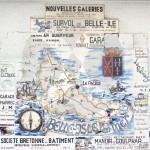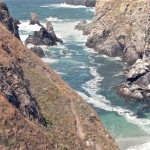Something we all tend to forget is just how well J boats rate. They also tend to sail well, but perhaps more importantly they seem to outsail their ratings. I cannot count the number of races, where we considered we had sailed well and were biting our nails about a j boat close on our heels, wondering if we would have saved time against the competition.
The Swans, a Sparkman & Stephens staple in the seventies. We have forgotten how dominate these designs were. “Noremya” a Swan 48 was the first foreign yacht to win the Bermuda Race in 1972. I sailed this boat in her next life as “Weald” and was so impressed that we could power away from “Carina” often.
Skip Novak’s remarks demonstrate how captivating the anecdotes of life can be. Todays boats are so fast, there is little time for those little stories. Sitting on the rail is now so critical to a yacht’s performance; so life on a boat is now pretty much eating, sleeping or sitting on the rail. Not much time for shenanigans.
Rolex Middle Sea Race 2011, currently underway, is organized by the Royal Malta Yacht Club. Approximately 30 boats are still racing and 39 boats have finished as of 18.30 CEST.
After racing over 600 miles, the J/122 Artie crossed the finish line at 15.22 CEST, eight minutes in front of Jaru Team EC, a J/133, and, in doing so, was the first Maltese boat home. That finish also put the local entry, co-skippered by Lee Satariano and Christian Ripard, ahead of Rán (GBR) as overall handicap leader.
However, the crew of Artie will have to cool their heels on the Royal Malta Yacht Club terrace as they wait to see if any boat still racing might be able to beat them on handicap. A formal announcement of the overall winner will be made tomorrow at 1200 CEST at the Royal Malta Yacht Club.
Owner Lee Satariano was clearly relieved to beat his local rivals home and said, ‘It was very achievable because we worked very hard. The crew has been preparing the boat for the past several months, we even have a new sail wardrobe. Being the first Maltese boat gives us a big satisfaction because the local competition is very, very big.’ As for the possibility of an overall victory, he was more cautious and said, ‘The competition is growing every year. In the past we’ve had two second place finishes; we hope this third time is even better.’
Christian Ripard, co-skipper said, ‘It’s a great feeling. We ended up doing most of the race alongside or crossing tacks with Jaru; it’s nearly a rerun of last year, though this time we managed to beat them.
King’s Legend Joins Legends Fleet
Kings Legend in 1977. Click on image to enlarge.
 Alicante, Spain: King’s Legend, the boat that finished second in the Whitbread Round the World Race in 1977-78 with Skip Novak as her navigator, has become the latest entry to the Volvo Ocean Race Legends Regatta and Reunion in Alicante, Spain in November after securing sponsorship from The Jalousie Enclave, an exclusive property development in a UNESCO World Heritage site, Val des Pitons on the Caribbean island of St Lucia.
Alicante, Spain: King’s Legend, the boat that finished second in the Whitbread Round the World Race in 1977-78 with Skip Novak as her navigator, has become the latest entry to the Volvo Ocean Race Legends Regatta and Reunion in Alicante, Spain in November after securing sponsorship from The Jalousie Enclave, an exclusive property development in a UNESCO World Heritage site, Val des Pitons on the Caribbean island of St Lucia.
In 1977-78, owned by English gentleman Nick Ratcliff, flying the British ensign and drawing on the talent of a multinational professional crew, King’s Legend — a sloop rigged Swan 65 built by Nautor in Finland — came second behind Flyer.
“On King’s Legend we had a real boat race on our hands as the pre-race favourite, Flyer, had exactly the same handicap rating,” Novak, one of the Legends Ambassadors, recalled. “The wealthy Dutchman, Cornelius van Rietschoten beat us into Cape Town by only two hours after a hard-fought upwind battle in the South Atlantic. But the most poignant moment for me was seeing Table Mountain on the horizon from 50 miles out, having navigated there with ‘a sextant and a time piece’.
“The next crew drama was when a leak was discovered at the rudderpost, which was opening and closing in the huge waves. We made contact with the crew of Adventure, Great Britain II (both yachts will attend the reunion), and Heath’s Condor, all of whom agreed to listen out for King’s Legend via the radio every six hours.”
After two days of worry, the crew was able to bring the leak under control. However the event was a stark reminder that these are desolate oceans populated only by albatross, whales and ice, with no shipping within thousands of miles.
After a massive broach while stampeding towards Cape Horn, water from the heads found its way into the SSB radio, which immediately ceased to function. “It may seem strange today,” says Novak, “but no-one was in the least alarmed that we were completely cut off from the outside world.”
By being one degree of latitude too far south, King’s Legend lost Flyer on the scorecard forever, and trailed her across the finish line to take second overall.


